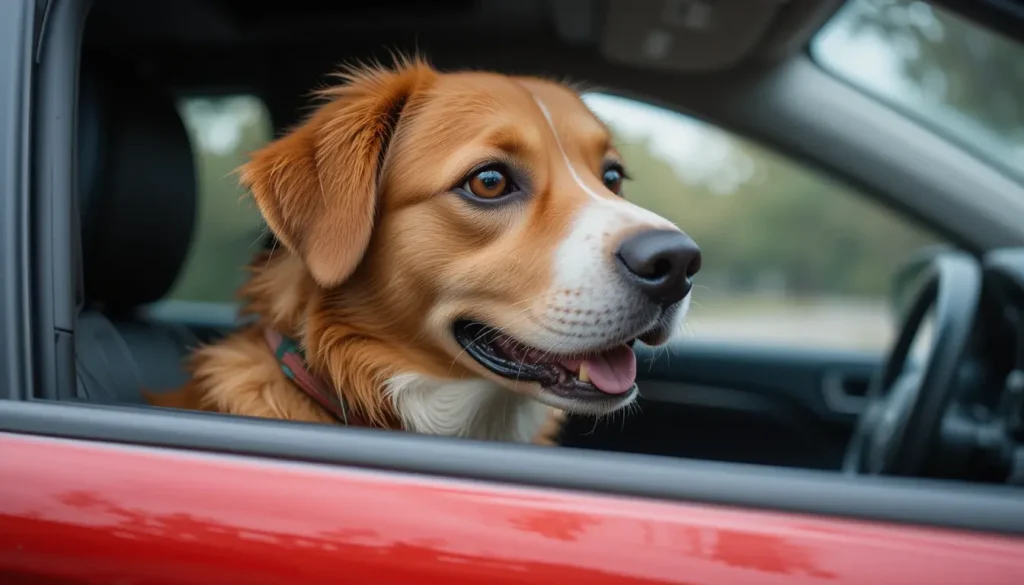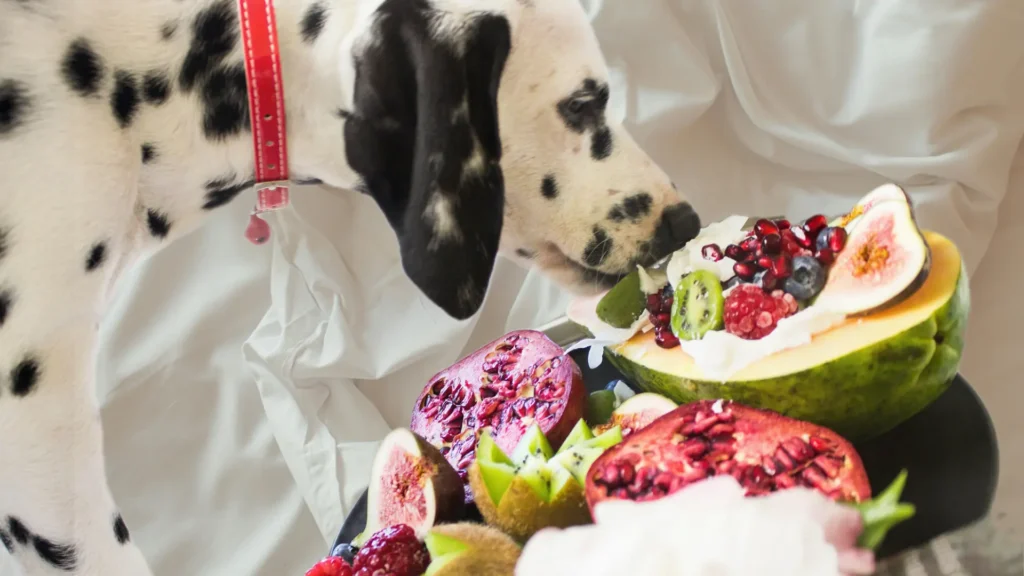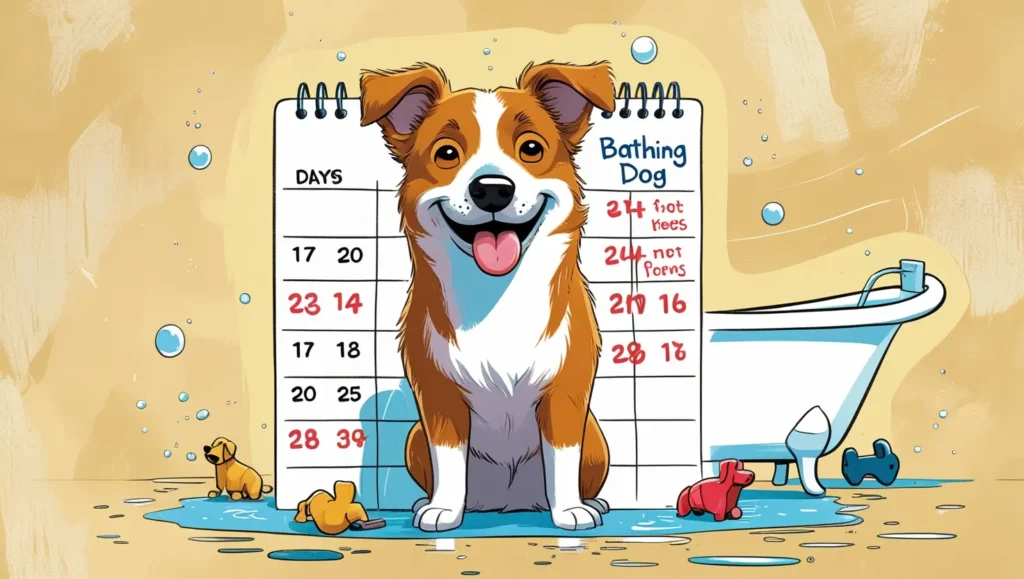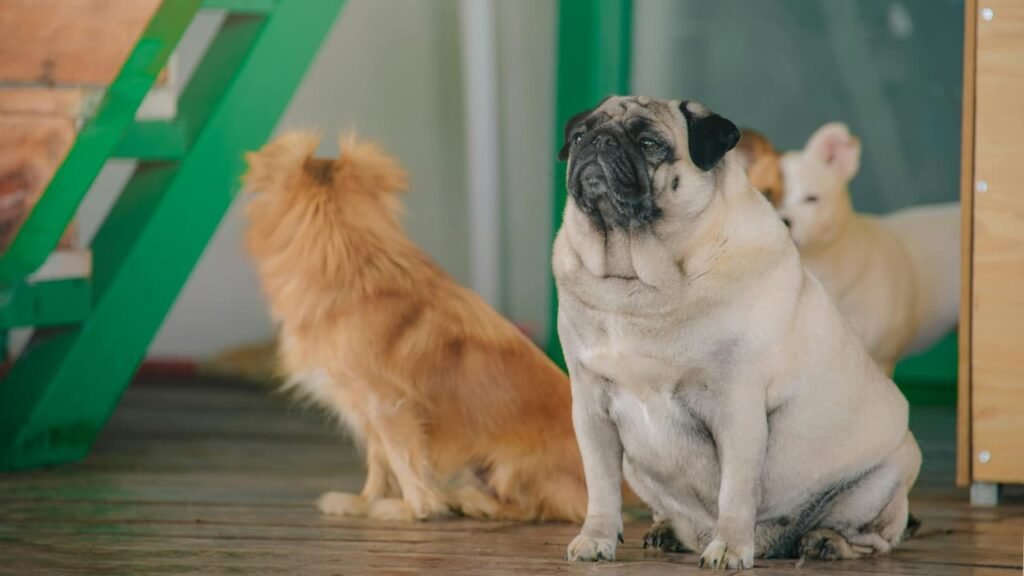You’re ready to head out for a trip. The car door opens. Your dog freezes, pulls back, or whines the moment you try to guide them in. What should be a simple ride turns into a stressful battle.
Many dog owners face this problem but feel helpless. A dog that hates the car can make road trips, vet visits, or family outings stressful for everyone. The good news is that this fear is not permanent. You can help your dog feel calm and safe in the car.
In this guide, we’ll walk step by step through the reasons, the training process, and the tools you can use to make car rides stress-free. By the end, you’ll not only understand why your dog reacts this way but also know exactly what to do to fix it.
Why Dogs Hate Car Rides in the First Place
Before you can solve the problem, you need to understand why it exists. Dogs don’t hate cars by nature. Something made them feel that the car is unsafe or unpleasant.
For many dogs, the car only means one thing: a trip to the vet. If most car rides end with shots or exams, the car itself becomes a warning sign. Other dogs may get sick from motion. The swaying and turning make their stomachs upset. Some dogs are scared of the sounds in a car—engines, horns, brakes.
The reason matters because it changes the solution. A dog afraid of noise needs different help than a dog with motion sickness. Some dogs carry a mix of both problems. Once you spot the root cause, training gets much easier.
Here’s a quick breakdown of common reasons:
- Bad associations: Trips linked only to stressful events.
- Motion sickness: Stomach upset, drooling, or vomiting.
- Noise sensitivity: Fear of engine sounds or road noises.
- Lack of exposure: Car rides were never introduced during puppyhood.
- Confinement stress: Feeling trapped in a moving space.
Each of these triggers needs to be handled with patience. But the key point is this: your dog’s dislike is not stubbornness—it’s fear or discomfort.
Training to Change the Car Experience
Here’s where the real work starts. Training a dog to enjoy car rides is a process, not a one-time trick. Each step builds trust and rewrites their view of the car. Think of this as a ladder. You don’t jump to the top—you climb it slowly and carefully.
Build Comfort Around the Car
This is where the journey starts. Your goal is not to put your dog inside yet. The goal is to make the car feel normal and safe from the outside.
Take your dog near the parked car when it’s quiet. Let them approach at their own pace. If they only sniff the tires or walk by, that’s progress. You want the car to stop being a strange or scary object.
Carry high-value treats with you. Each time your dog shows calm behavior near the car, reward them right away. Calm behavior can be sniffing, sitting, standing still, or looking at the car without pulling away. Praise gently as you give the reward.
Keep these sessions short. Five to ten minutes is enough in the beginning. Repeat them daily or several times a week. Don’t rush to the next stage until your dog can walk around the car without stress.
This step may feel slow, but it builds the foundation. A dog that feels safe near the car will be ready for the inside work later. Skipping this stage leads to setbacks, so take your time.
Introduce the Interior
Now that the outside feels safe, it’s time to make the inside less intimidating. At this stage, the engine stays off. The door remains open so your dog knows they’re not trapped.
Place something inviting inside. It could be a favorite blanket, a chew, or a toy. These familiar items bring comfort and reduce stress. If your dog loves food puzzles, this is the perfect place to use one.
Let your dog investigate without pressure. Some dogs will hop in quickly. Others may only put their front paws on the edge to peek inside. Both reactions are normal. Reward any attempt to engage with the car, no matter how small. If they just sniff the seat, praise them and give a treat.
Don’t force your dog inside. Forcing breaks trust and slows progress. Instead, celebrate small steps. Over multiple sessions, your dog will grow curious and more willing to step in on their own.
Repeat this stage until your dog can sit or stand calmly inside the parked car. They don’t need to stay long yet—just a minute or two of calm behavior is a strong start.
Short Calm Sessions Inside
Once your dog can step into the car willingly, the next step is to make sitting inside feel normal. The car is still off. No movement. The focus is calm bonding time.
Bring your dog into the car with you. Sit together for a few minutes. Don’t turn this into training drills—keep it easy and relaxed. You can talk to your dog softly, pet them, or let them enjoy a chew.
The goal here is to shift the dog’s view of the car from “scary box” to “safe resting spot.” End every session on a good note before your dog gets restless. If your dog stays calm for three minutes, end it there. That success is better than pushing too long.
Make these sessions part of your routine. You can practice once or twice a day, keeping it short. Over time, your dog will start hopping into the car with less hesitation.
When your dog can calmly relax in the parked car for several minutes, you’ve built the confidence needed to move toward engine sounds and movement.
Engine Sound Training
Now that your dog can sit calmly in the parked car, it’s time to add the first big challenge: the sound of the engine. Many dogs react strongly to this step because the sudden noise feels unpredictable. That’s why you need to go slow and reward calm behavior.
Start with your dog already sitting comfortably inside the car. Make sure they have something positive to focus on, like a chew or small treats in your hand. Then, without warning them, gently turn on the engine. Keep your own body language relaxed. If you tense up, your dog will sense it.
Watch their reaction closely. If they stay calm, reward right away with treats and praise. If they look startled but settle quickly, reward that too. But if they panic—whining, pacing, or trying to get out—turn the engine off and return to quiet sitting. That’s not failure. It simply means you need to shorten the exposure.
Try again the next day, but keep the engine on for just a few seconds. Gradually increase the time as your dog adapts. The goal is to make the engine sound normal, not scary. Some dogs adjust in a couple of sessions, while others may need weeks. The key is patience.
Once your dog can stay calm with the engine running for several minutes, you’ve cleared one of the biggest hurdles. You’re now ready to introduce movement.
Micro-Rides
Movement is a whole new layer for your dog to process. That’s why you start with micro-rides. These rides are short, controlled, and always end with something your dog enjoys.
Begin with a ride that lasts under a minute. Drive around your block or down the street, then return home. Keep your dog secure with a harness or crate so they don’t slide around. The less physical stress they feel, the easier the training will go.
When you arrive back home, don’t just end the session. Give your dog something rewarding right away. That could be playtime in the yard, a walk, or a meal. The idea is to build a new link in their mind: car ride equals positive outcome.
Repeat these short rides daily or several times a week. Stay consistent. Over time, your dog will begin to see the pattern—getting in the car leads to good things. When you notice your dog hopping in more eagerly and settling faster, you can slowly increase the length of the trips.
Keep the increases small. A one-minute ride becomes three minutes, then five, then ten. If your dog shows stress, go back to the shorter distance for a while before trying again. Every small success adds up.
The secret to this step is not the distance. It’s the consistency and the positive ending. That’s what rewires your dog’s feelings about car rides.
Slowly increase the length of rides. Keep pairing each ride with a positive event. Short daily practice works better than one long stressful attempt.
Step by step, your dog learns that car rides are not scary—they lead to good things. This layered training is the most effective and humane way to turn fear into comfort.
Tools and Tricks to Make the Process Easier
Training works best when you set the stage for success. That means using tools that make your dog feel safe and reduce stress.
- Safe seating: Use a crate, seat belt harness, or booster seat. A secure spot helps prevent motion sickness and fear from sliding around.
- Familiar smells: Place your dog’s blanket or toy in the car. Familiar scents reduce stress.
- Fresh air: Crack a window for airflow. This balances pressure in the ears and helps with nausea.
- Frequent breaks: For longer trips, stop for short walks. Movement breaks reduce restlessness.
- Motion sickness help: Talk to your vet about remedies if your dog gets sick often. Ginger treats or prescribed medicine can help.
- Calming aids: Some dogs benefit from calming sprays, chews, or music designed for relaxation.
Remember: tools alone won’t solve the problem. They support the training process. You still need to build positive associations through repetition.
The journey takes patience, but the payoff is worth it. You unlock more freedom. Trips to the vet no longer feel like a battle. Family outings become easier. Your dog can join road trips, hikes, and visits without fear.
The transformation also strengthens your bond. Training is not only about fixing a problem—it’s about trust. Every small success builds confidence in your dog and deepens your connection.
Dealing with a dog that hates car rides is not about forcing them. It’s about teaching them that the car is safe, calm, and linked to good outcomes. You now know the reasons behind their fear, the step-by-step process to fix it, and the tools that make rides smoother.
Stay patient. Progress may be slow, but every small win matters. Stick to short sessions, keep rewards high, and end rides on a good note. Over time, your dog’s view of the car will shift.
When that shift happens, you’ll notice the difference right away. A ride to the park, the vet, or a family trip won’t feel stressful anymore. You’ll look back and see the change you built through training, patience, and care. That’s the real victory.




